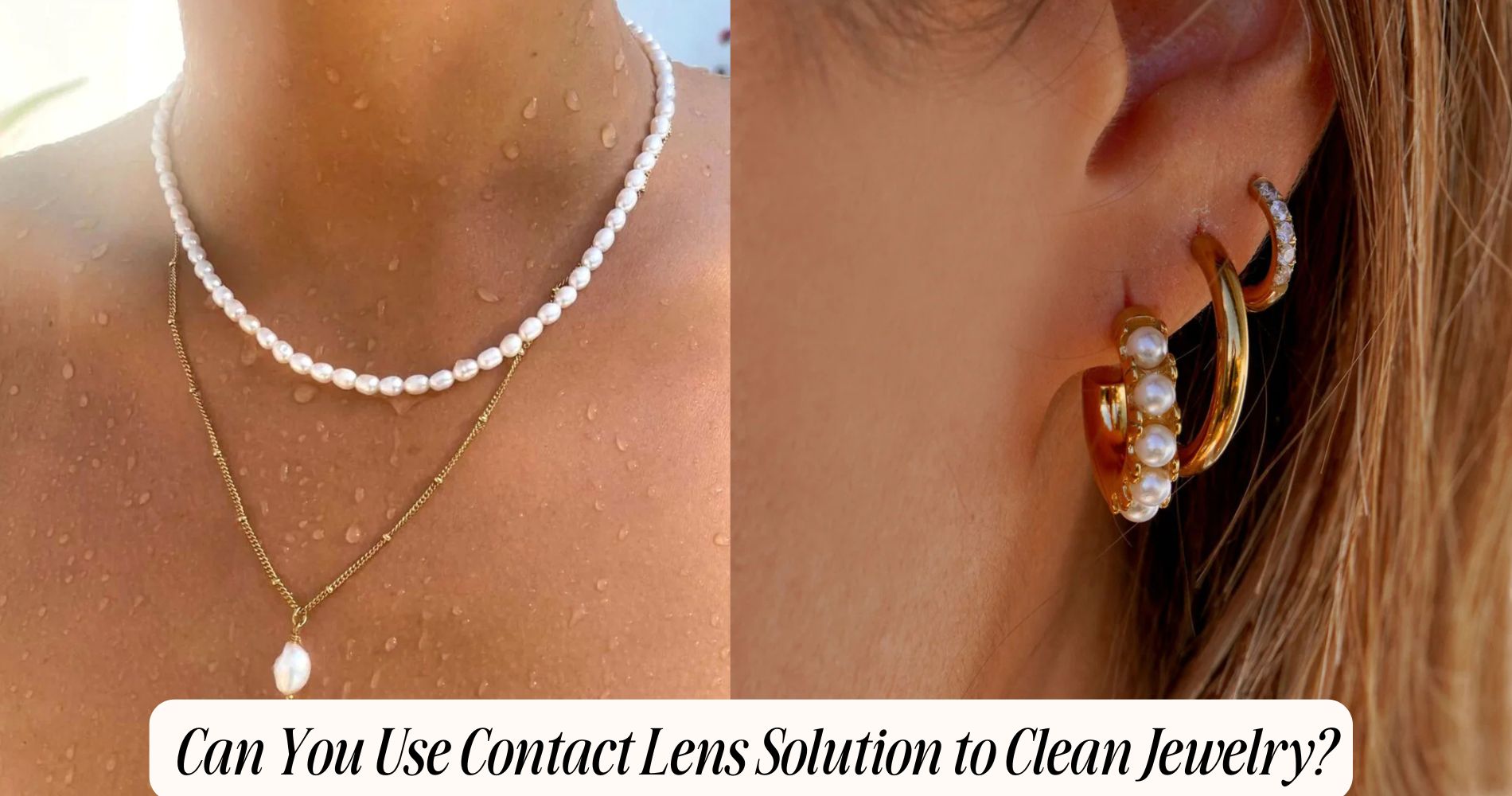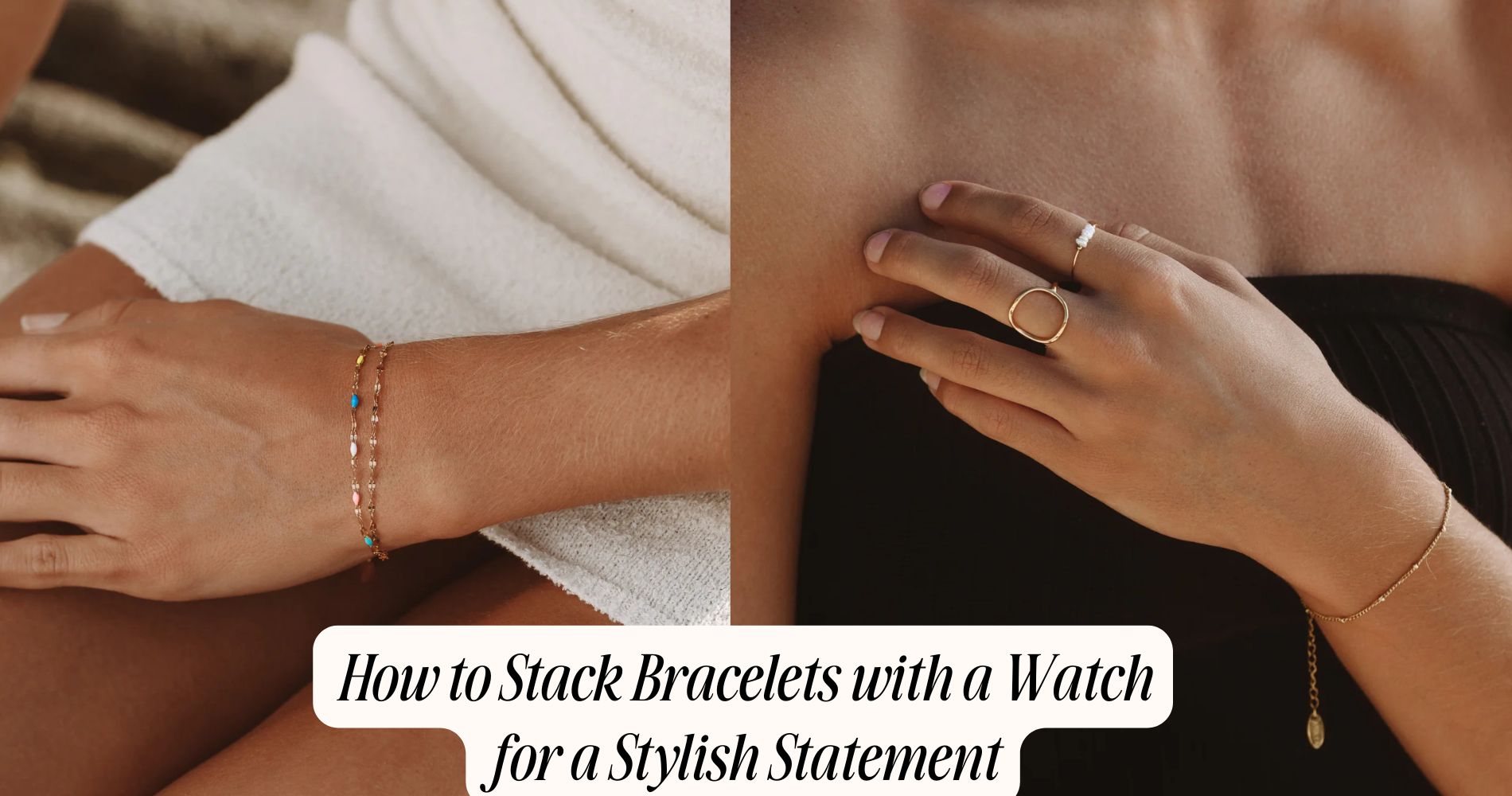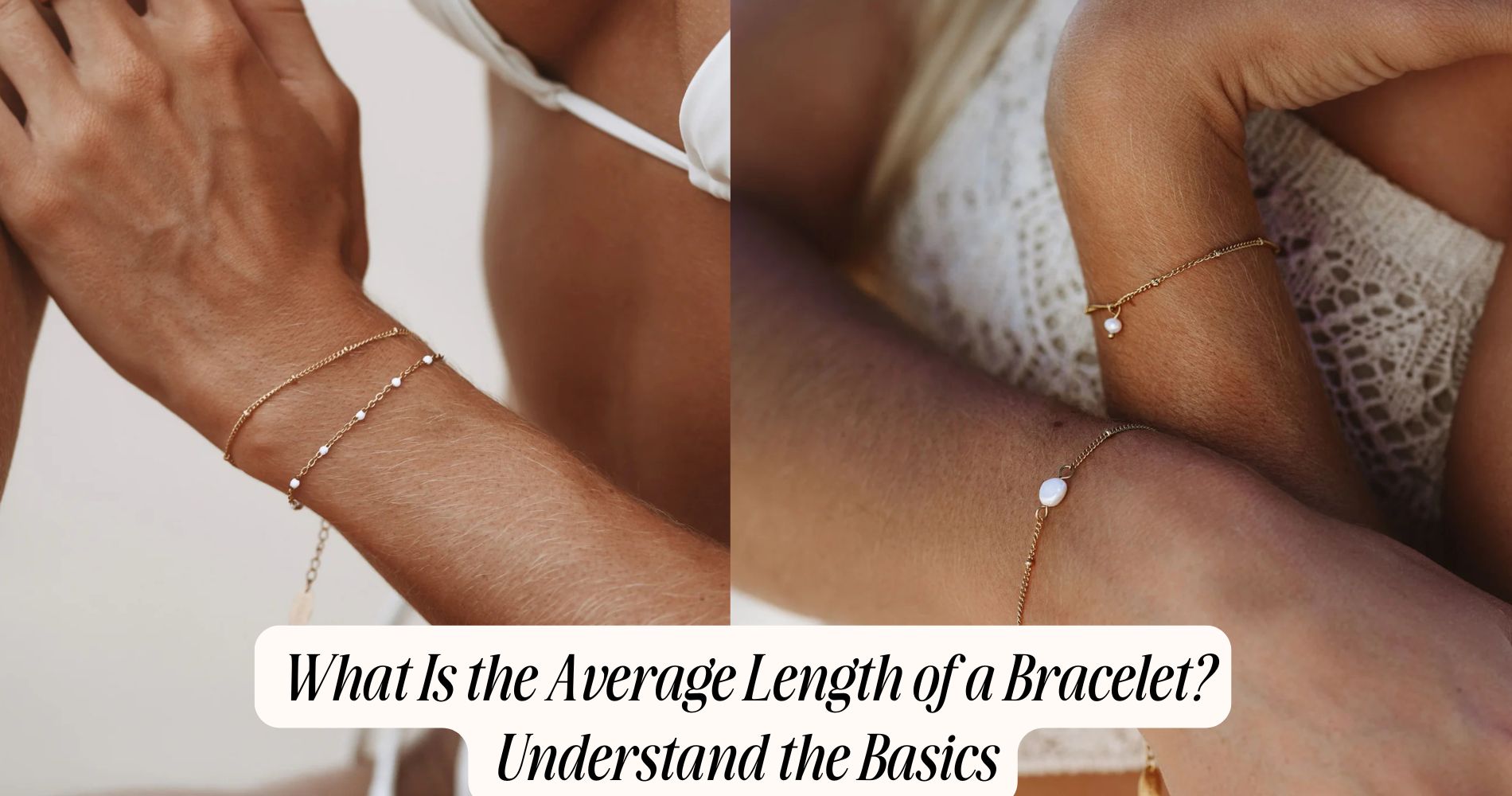
Can You Use Contact Lens Solution to Clean Jewelry?
Wondering, Can you use contact lens solution to clean jewelry? The answer is yes, especially if the solution contains surfactants that effectively lift dirt and oils. However, it's essential to ensure that the jewelry is made of non-porous materials, as some delicate gemstones might react poorly to the solution's ingredients. Always check that the cleaning solution is free from harsh chemicals that could harm your pieces. After soaking, use a soft cloth to gently wipe the jewelry, enhancing its shine and clarity. For effortlessly chic options, explore our Minimal Jewelry Set collection, and discover other safe cleaning methods that may work best for your needs.
Understanding Contact Lens Solution
Contact lens solution plays an essential role in maintaining the hygiene and longevity of your lenses, but its cleaning properties extend beyond just eyewear.
Understanding the various contact lens types is vital, as each may require different cleaning solutions. Typically, you'll find saline solutions, multipurpose solutions, and hydrogen peroxide-based solutions designed for specific lens materials, including soft and rigid gas permeable lenses.
Saline solutions primarily serve to rinse and store lenses, while multipurpose solutions offer cleaning, rinsing, disinfecting, and storing functions in one. Hydrogen peroxide-based solutions are effective for deep cleaning but necessitate a neutralization step before lens insertion.
Knowing which cleaning solution to use can greatly enhance the lifespan of your lenses and guarantee comfort during wear.
When it comes to cleaning jewelry, the properties of these solutions can also be beneficial. The surfactants in contact lens cleaning solutions effectively remove dirt, oils, and grime from various surfaces, including metal and gemstones.
However, always consider the material of your jewelry and test a small area first to avoid damage. By leveraging the cleaning properties of contact lens solutions, you can maintain your jewelry's shine alongside your lenses.
Key Ingredients to Consider
When selecting a contact lens solution for cleaning jewelry, it's important to pay attention to the key ingredients that contribute to its effectiveness.
Generally, you'll find two main solution types: multipurpose solutions and hydrogen peroxide-based solutions.
Multipurpose solutions often contain surfactants that help loosen dirt and oil from your jewelry. These surfactants are essential for achieving a thorough clean without harsh scrubbing. Additionally, preservatives are usually included to maintain the solution's integrity, but you'll want to verify these are safe for your jewelry materials.
On the other hand, hydrogen peroxide-based solutions can offer a more intense cleaning action due to their oxidizing properties. This type can effectively break down grime and disinfect your jewelry. However, it's important to check for any additional ingredients that might be abrasive or harmful to certain metals or gemstones.
When evaluating solutions, always read the labels carefully. Look for formulations that are gentle yet effective, confirming they won't damage your cherished pieces.
Safety for Different Jewelry Types
Understanding the key ingredients in contact lens solutions is just the starting point; ensuring safety for different jewelry types is equally important.
When it comes to gold jewelry, you'll find that it's generally safe to clean with contact lens solution, as the metals used are resistant to tarnishing and damage. However, always check for any gemstones set in gold, as their safety can vary.
For silver jewelry, caution is advised. Silver can tarnish over time, and while contact lens solutions may help remove dirt, they mightn't be effective in preventing tarnish. It's best to stick to products specifically designed for silver cleaning.
Gemstone safety is another vital factor. Some gemstones are porous or sensitive to chemicals, making them vulnerable to damage. For example, pearls and opals can be harmed by the ingredients found in contact lens solutions. Always research the specific gemstone before using any cleaning solution.
Costume jewelry presents a mixed bag; while some pieces might tolerate contact lens solutions, others could be damaged due to their base metals and finishes.
When in doubt, opt for gentle, jewelry-specific cleaners for all types of jewelry.
Effectiveness of Contact Lens Solution
When considering contact lens solution for cleaning jewelry, it's crucial to understand its ingredients and how they work.
The cleaning mechanism typically involves surfactants that help break down dirt and oils, making your jewelry sparkle.
Additionally, you'll want to assess the safety of these solutions for different types of jewelry to confirm they don't cause damage.
Ingredients in Solution
Often overlooked, the ingredients in contact lens solution play a crucial role in its effectiveness for cleaning jewelry. The chemical composition of these solutions typically includes saline, surfactants, and preservatives. Saline serves as a base, providing a gentle medium that can help dissolve dirt and grime. Surfactants, on the other hand, work to break down oils and residues that cling to your jewelry, enhancing the cleaning process.
However, it's important to be aware of potential hazards when using contact lens solution for this purpose. Some solutions contain harsh preservatives or additives that might react negatively with certain metals or gemstones. For instance, solutions with hydrogen peroxide or thimerosal can lead to tarnishing or damage over time, particularly for delicate pieces.
Before proceeding with cleaning your jewelry, it's wise to read the label carefully and verify that the ingredients are safe for your specific items.
Cleaning Mechanism Explained
The cleaning mechanism of contact lens solution is surprisingly effective for jewelry care, thanks to its unique formulation. This solution typically contains surfactants that lower surface tension, allowing dirt and oils to be lifted away from surfaces. When you immerse your jewelry in the solution, these surfactants begin to work by breaking down the grime that accumulates on your pieces.
Moreover, if you use ultrasonic cleaning in conjunction with the solution, the effectiveness increases markedly. Ultrasonic cleaners create high-frequency sound waves that produce tiny bubbles in the liquid. When these bubbles implode, they generate intense cleaning action that complements the chemical reactions initiated by the solution. This combination can dislodge dirt from even the most intricate designs of your jewelry.
It's important to remember that while contact lens solution can effectively clean your jewelry, the underlying mechanisms rely on its surfactant properties and the physical agitation provided by ultrasonic cleaning.
Safety for Jewelry
Using contact lens solution for cleaning jewelry is generally safe, but it's vital to take into account the materials of your pieces. Not all jewelry is created equal, and some materials may react negatively to the components in the solution.
For instance, while metals like gold and silver are typically compatible, softer stones or pearls may suffer damage due to the solution's chemical properties.
When considering jewelry longevity, it's important to assess how your pieces will endure the cleaning process. Regular exposure to contact lens solution may lead to tarnishing or degradation of certain materials.
Always check the manufacturer's recommendations for specific gemstones or settings before proceeding.
To guarantee material compatibility, conduct a patch test on a small, inconspicuous area of your jewelry first. If you notice any adverse reactions, such as discoloration or cloudiness, discontinue use immediately.
Alternative Jewelry Cleaning Methods
Jewelry cleaning can occasionally feel intimidating, but there are several alternative methods that can effectively restore the shine and luster of your favorite pieces.
One popular approach is using natural cleaners, which are gentle yet effective. For instance, a simple mixture of warm water and mild dish soap can work wonders. Just soak your jewelry for a few minutes, then gently scrub with a soft brush before rinsing and drying it with a soft cloth.
Another method gaining traction is ultrasonic cleaning. This technique employs high-frequency sound waves to create tiny bubbles in a cleaning solution, which effectively dislodge dirt and grime from intricate designs. Many jewelers use ultrasonic cleaners for a deep clean, but you can also find home-use models that are safe for most types of jewelry.
If you prefer a more hands-on approach, baking soda and vinegar can also be effective. Simply create a paste, apply it to the jewelry, and rinse thoroughly.
Whichever method you choose, always remember to check if your jewelry is suitable for cleaning this way, especially when dealing with delicate gemstones or settings.
Step-by-Step Cleaning Guide
A thorough cleaning process can greatly enhance the appearance of your jewelry, bringing back its original brilliance. To effectively clean your pieces using contact lens solution, follow these steps.
First, gather your supplies: a small bowl, contact lens solution, a soft-bristled toothbrush, and a lint-free cloth. Make sure your jewelry is suitable for this method; avoid porous stones or pieces with delicate settings.
Next, pour enough contact solution into the bowl to submerge your jewelry. Let the pieces soak for about 5-10 minutes. This will help loosen dirt and grime.
After soaking, use the soft-bristled toothbrush to gently scrub the jewelry, paying attention to crevices where dirt may accumulate. Be cautious with pressure to avoid scratching the surface.
Once you've cleaned all the pieces, rinse them thoroughly under lukewarm water to remove any residue from the contact solution.
Finally, pat your jewelry dry with the lint-free cloth and admire the results. Regular jewelry maintenance using this method can keep your pieces looking radiant, ensuring they remain a cherished part of your collection for years to come.
Tips for Preventing Jewelry Damage
To keep your jewelry in pristine condition, it's essential to adopt a few preventative measures that guard against damage.
First, consider your jewelry storage. Use a soft-lined box or individual pouches to prevent pieces from scratching each other. Avoid tossing your jewelry into a drawer or a pile, as this can lead to tangles and damage.
Next, pay attention to your cleaning frequency. Regularly inspect your jewelry for dirt or tarnish, and clean it appropriately based on the material. For example, delicate pieces may require more gentle cleaning methods, while more durable items can withstand deeper cleans.
Don't wait until your jewelry looks dirty; a proactive approach helps maintain its luster.
Additionally, be mindful of when you wear your jewelry. Remove it before swimming, exercising, or applying lotions and perfumes, as these substances can cause damage over time.
Finally, store your pieces in a cool, dry place to prevent exposure to humidity and heat, which can affect their integrity.
When to Consult a Professional
Even with the best preventative measures in place, there are times when consulting a professional becomes necessary. If you notice signs of damage or unusual wear on your jewelry, it's important to seek a professional inspection.
Experienced jewelers can identify issues that may not be visible to the untrained eye, such as loose stones or weakened settings, which could lead to further damage if left unaddressed.
When you're unsure about the cleaning methods you've used or if you've exposed your jewelry to harsh chemicals, a professional's expertise is invaluable. They can recommend appropriate cleaning techniques tailored to your specific pieces, ensuring that they're treated with care.
Additionally, if you're considering selling or insuring your jewelry, a professional jewelry appraisal is vital. This process not only determines the piece's value but also provides documentation that can be important for insurance purposes.
Final Thoughts on Jewelry Care
Caring for your jewelry requires attention to detail and the right techniques.
By understanding proper cleaning methods, choosing safe materials, and committing to regular maintenance, you'll guarantee your pieces remain stunning for years to come.
Let's explore these essential aspects of jewelry care to help you protect your valuable items effectively.
Proper Cleaning Techniques
How can you guarantee your jewelry remains in pristine condition for years to come? The key lies in adopting proper cleaning techniques and establishing a consistent cleaning frequency.
Begin by evaluating the type of jewelry you own; different materials require tailored care. For instance, delicate pieces may benefit from gentle cleaning methods, while more robust items can withstand stronger solutions.
Use a soft, lint-free cloth to wipe down your jewelry after each wear. This simple act prevents the buildup of oils and dirt, ensuring your pieces maintain their luster.
For deeper cleaning, consider soaking your jewelry in warm, soapy water for about 15 minutes. Be sure to use a mild soap, as harsh chemicals can cause damage. After soaking, gently brush with a soft toothbrush to remove any stubborn debris, and rinse thoroughly.
Establish a regular cleaning schedule—once every month is a good rule of thumb for everyday pieces. For fine jewelry or items with intricate designs, cleaning every few weeks can enhance their longevity.
Safe Materials for Jewelry
Choosing the right materials for your jewelry plays a significant role in its longevity and overall appearance. When selecting pieces, consider the durability and maintenance needs of the materials.
For instance, gold plating can offer an attractive finish but may wear off over time, especially if exposed to harsh chemicals or excessive friction. If you want a lasting shine, opting for solid gold or gold-filled options is wiser.
Gemstone settings also deserve your attention. Certain settings can protect gemstones from damage while enhancing their beauty. For example, bezel settings encircle the stone, offering both security and style. Conversely, prong settings expose more of the gem, which may increase its vulnerability to chips and scratches.
Additionally, be cautious with softer materials, like pearls or opals, which require gentler care.
Always check the compatibility of cleaning solutions with your jewelry's materials; harsh chemicals can lead to discoloration or damage. By understanding the materials in your jewelry, you can make informed choices that preserve their beauty and integrity, ensuring they remain cherished pieces for years to come.
Regular Maintenance Importance
Regular maintenance is vital for preserving the beauty and integrity of your jewelry over time. Engaging in regular cleaning not only enhances the appearance of your pieces but also guarantees their longevity. Dust, dirt, and oils can accumulate on your jewelry, leading to dullness and potential damage.
By incorporating a consistent cleaning routine, you can avoid these issues and keep your treasures sparkling. It's important to choose the right cleaning method based on the materials of your jewelry. For instance, while some pieces benefit from gentle soap and water, others may require specialized solutions.
Regular inspections are equally important; check for loose stones, worn prongs, or signs of wear. Addressing these concerns early can prevent costly repairs later.
Additionally, proper storage plays a significant role in maintaining your jewelry's condition. Store each piece separately in a soft cloth or jewelry box to avoid scratches.
Frequently Asked Questions
Can Contact Lens Solution Remove Tarnish From Silver Jewelry?
Contact lens solution isn't designed for tarnish removal, and using it for silver cleaning might not yield effective results. Instead, consider dedicated silver cleaners or natural methods for restoring your jewelry's shine and luster.
Is Contact Lens Solution Safe for Cleaning Pearls?
Using contact lens solution isn't recommended for cleaning pearls. For pearl care, opt for safe cleaning methods like a damp, soft cloth instead. This guarantees your pearls maintain their luster and integrity over time.
How Often Can I Use Contact Lens Solution on Jewelry?
You should limit using contact lens solution on jewelry to occasional cleanings, following frequency guidelines. For regular maintenance, consider safer cleaning alternatives like mild soap and water or specialized jewelry cleaners to protect your pieces effectively.
Will Contact Lens Solution Affect Gemstones' Clarity or Color?
Using contact lens solution could affect gemstones' clarity or color due to its solution ingredients. For ideal gemstone care, it's best to use products specifically designed for cleaning jewelry to avoid potential damage.
Can I Use Contact Lens Solution on Costume Jewelry?
You shouldn't use contact lens solution on costume jewelry. For effective costume jewelry care, consider safer jewelry cleaning alternatives like mild soap and water, or specialized cleaners designed to preserve the integrity of your pieces.
Conclusion
In summary, while using contact lens solution for cleaning jewelry might seem convenient, it's crucial to evaluate the type of jewelry and the solution's ingredients. Some materials may not react well, potentially causing damage. Always prioritize safer, dedicated cleaning methods or consult a professional for valuable pieces. By taking these precautions, you can guarantee your jewelry remains in pristine condition, enhancing its longevity and sparkle. Careful maintenance is key to preserving your cherished items.
























Leave a comment
This site is protected by hCaptcha and the hCaptcha Privacy Policy and Terms of Service apply.